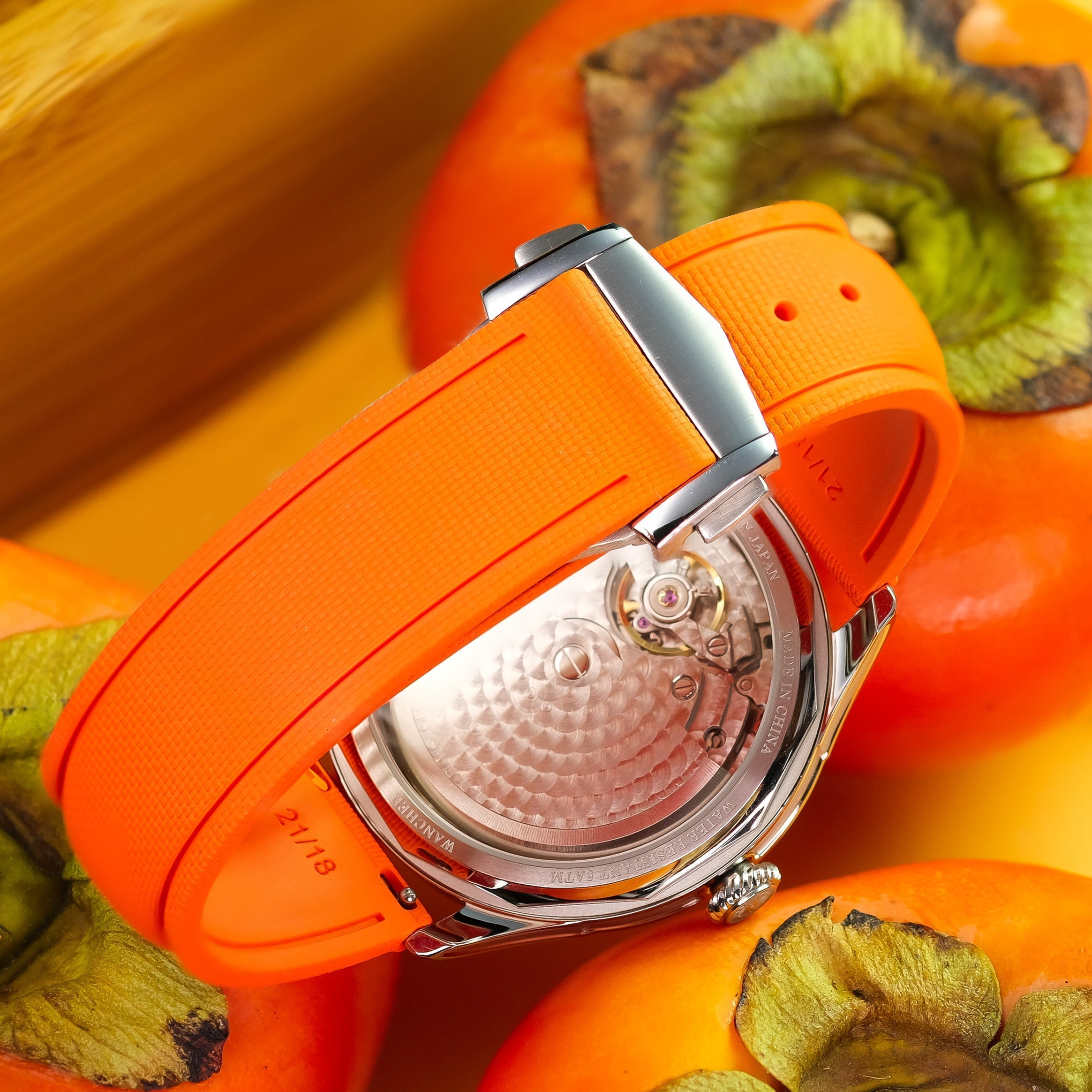In the world of watchmaking, few innovations have blended mechanical artistry and modern precision as elegantly as the Meca-Quartz chronograph movement. It represents the perfect harmony between traditional horological craftsmanship and cutting-edge Japanese engineering — a hybrid technology that changed the way we experience timekeeping.
The Birth of a New Era
The story begins in the 1980s, a transformative decade for the global watch industry. The Quartz Revolution of the 1970s had already reshaped watchmaking, bringing unprecedented accuracy and affordability through quartz-powered watches. Mechanical chronographs, while beloved for their intricate gears and hand-finished components, were becoming symbols of nostalgia rather than practicality.

(Wancher Legend's Movement: Our 1st Meca-Quartz Watch Powered by Miyota 6S21)
Then came Japan’s breakthrough. In 1983, Seiko unveiled the Caliber 7A28, the world’s first analog quartz chronograph movement. It was a marvel of miniaturization — fully metal, highly accurate, and equipped with independent motors for each chronograph hand. The 7A28 even found its way onto the wrists of RAF pilots and appeared in the 1986 movie Aliens, worn by Sigourney Weaver.

This was the first spark that would ignite the evolution of the Meca-Quartz chronograph.
The Evolution: Meca-Quartz is Born
While the Seiko 7A28 set the foundation, the true fusion of mechanical chronograph feel and quartz precision came later with Seiko’s VK series movements — the ones now recognized as Meca-Quartz.
The “Meca” part refers to the mechanical chronograph module, which controls the pushers, gears, and reset levers. The “Quartz” part refers to the battery-powered oscillator that keeps time with extreme accuracy. This hybrid design gave watch enthusiasts the best of both worlds:
-
The smooth, mechanical click when starting or resetting the chronograph.
-
The instant reset of the second hand to zero — just like in a mechanical timepiece.
-
The reliability and affordability of quartz accuracy and battery life.
Movements like Seiko VK63, VK64, and VK68 became staples in the industry. They allowed brands — from microbrands to established watchmakers — to offer high-quality chronographs with genuine mechanical charm, without the high maintenance or cost of a fully mechanical chronograph.
Here are Watches that use VK64 & VK68 Movement
- Furlan Marri: CHF 585.00 / $700
- Corinche Heritage Chronograph: $425 - $525
- Brew Metric Collection: $475
- Wancher Tenji - Read Blog Now
Why Meca-Quartz Still Matters
Decades later, Meca-Quartz chronographs continue to hold a special place in watchmaking. They represent Japanese innovation at its finest — a technology that respects tradition while embracing progress.
Collectors appreciate them for their tactile chronograph experience, durability, and affordability. Watchmakers love them for their versatility and reliability. And enthusiasts value them as an entry point into the world of horology without compromise.
The Meca-Quartz movement stands as proof that Japan’s watchmaking philosophy — precision, practicality, and respect for craftsmanship — continues to inspire the world.
Wancher and the Spirit of Japanese Hybrid Watchmaking
At Wancher Watch, we celebrate this spirit through every timepiece we create. Our Tenji Chronograph, powered by a Seiko VK64 Meca-Quartz movement, embodies the same values that defined the original Japanese chronograph revolution — precision, craftsmanship, and purposeful design.
With the Tenji, you don’t just wear a chronograph — you wear a piece of Japan’s horological evolution.

Final Thoughts
The story of the Japanese Meca-Quartz chronograph is not just about technology; it’s about balance — between the heartbeat of a mechanical machine and the precision of quartz. It reflects Japan’s timeless pursuit of perfection: quiet innovation, subtle artistry, and unwavering reliability.
From Seiko’s 7A28 to the modern VK64 powering today’s creations, the legacy lives on — ticking faithfully, second by second.



